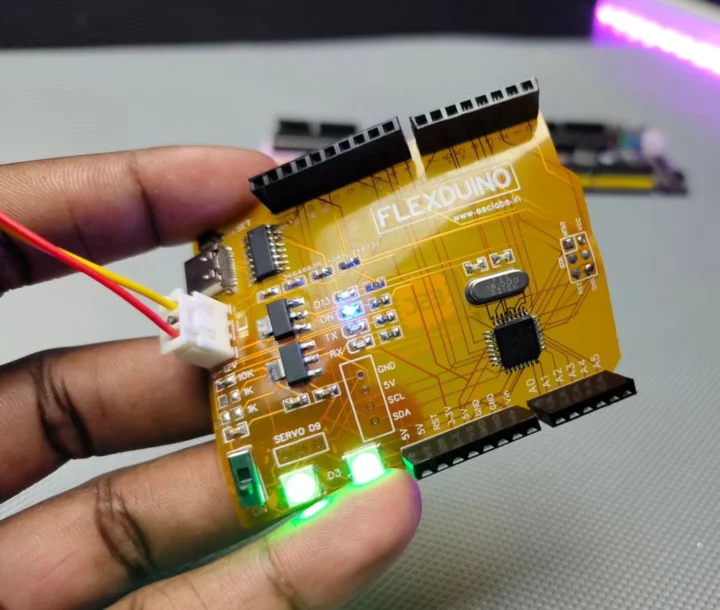YouTuber “EDISON SCIENCE CORNER” has designed yet another Arduino UNO clone but with a twist as the board is made out of a flexible PCB.
Companies like JLCPCB, PCBWay, and others have been offering flexible PCB manufacturing services for a while, mostly for flat cables or small boards that need to fit around a case, but the Flexduino is a complete Arduino UNO clone made of a flex PCB, and it looks rather cool.
The flexible Arduino board does work as shown with the RGB LED and power LED in the photo above and YouTube video below, but its usefulness is rather limited, and some corners had to be cut as for instance there’s no ground plane.
Nevertheless, it’s a nice demo of flexible PCB technology. The video on the EDISON SCIENCE CORNER channel provides a short demo, shows how the PCB was designed (EasyEDA), and go through the ordering and assembly process. The project files for the Flexduino haven’t been shared as far as I can tell.
Via Hackster.io, Reddit, and Facebook.

Jean-Luc started CNX Software in 2010 as a part-time endeavor, before quitting his job as a software engineering manager, and starting to write daily news, and reviews full time later in 2011.
Support CNX Software! Donate via cryptocurrencies, become a Patron on Patreon, or purchase goods on Amazon or Aliexpress








What’s the point?
Given that the Arduino form factor usually involves another board on top, the whole “flexible” part only makes this difficult, and if you don’t need to plug another board on top, why stick with the Arduino layout?
Besides, a flex pcb is usually custom designe to fit a specific deisgn constraint. WHat’s the point in a “generic” flex PCB?
This was my exact thought when I saw this a day or two ago.
Curseduino
Even without shield stacking, it’s hard to imagine those SIP headers allowing much compliance. It is easy to imagine a lot of component delamination if the flexure is really stressed. Maybe the best use of this flexibility is how well it might comply and find its way into some peculiar volumes? That could be novel.